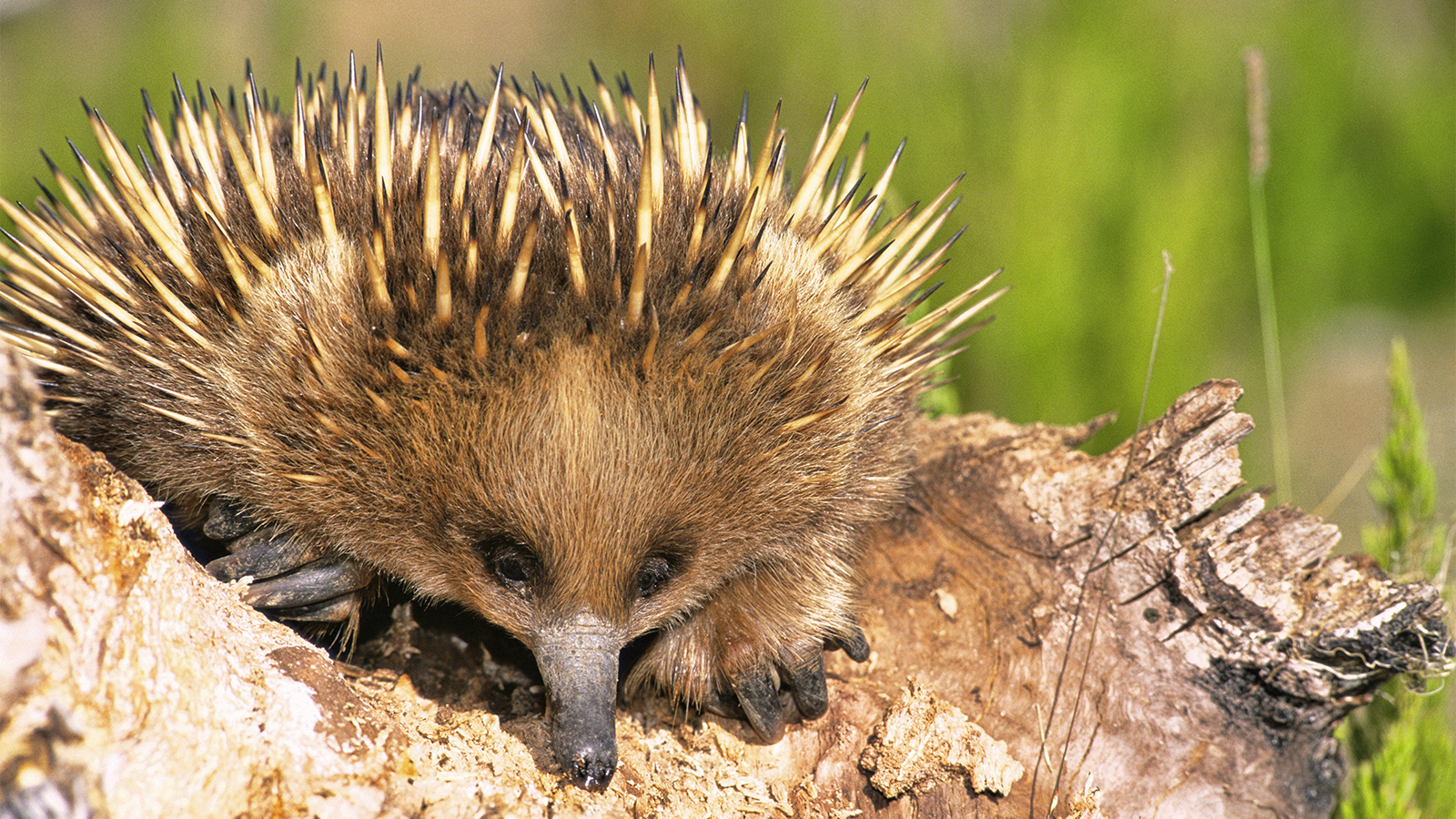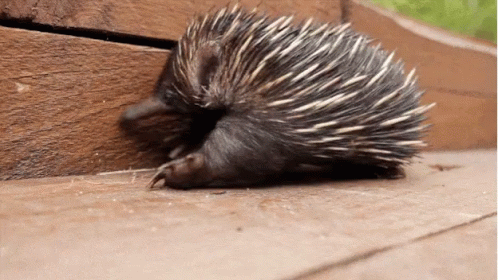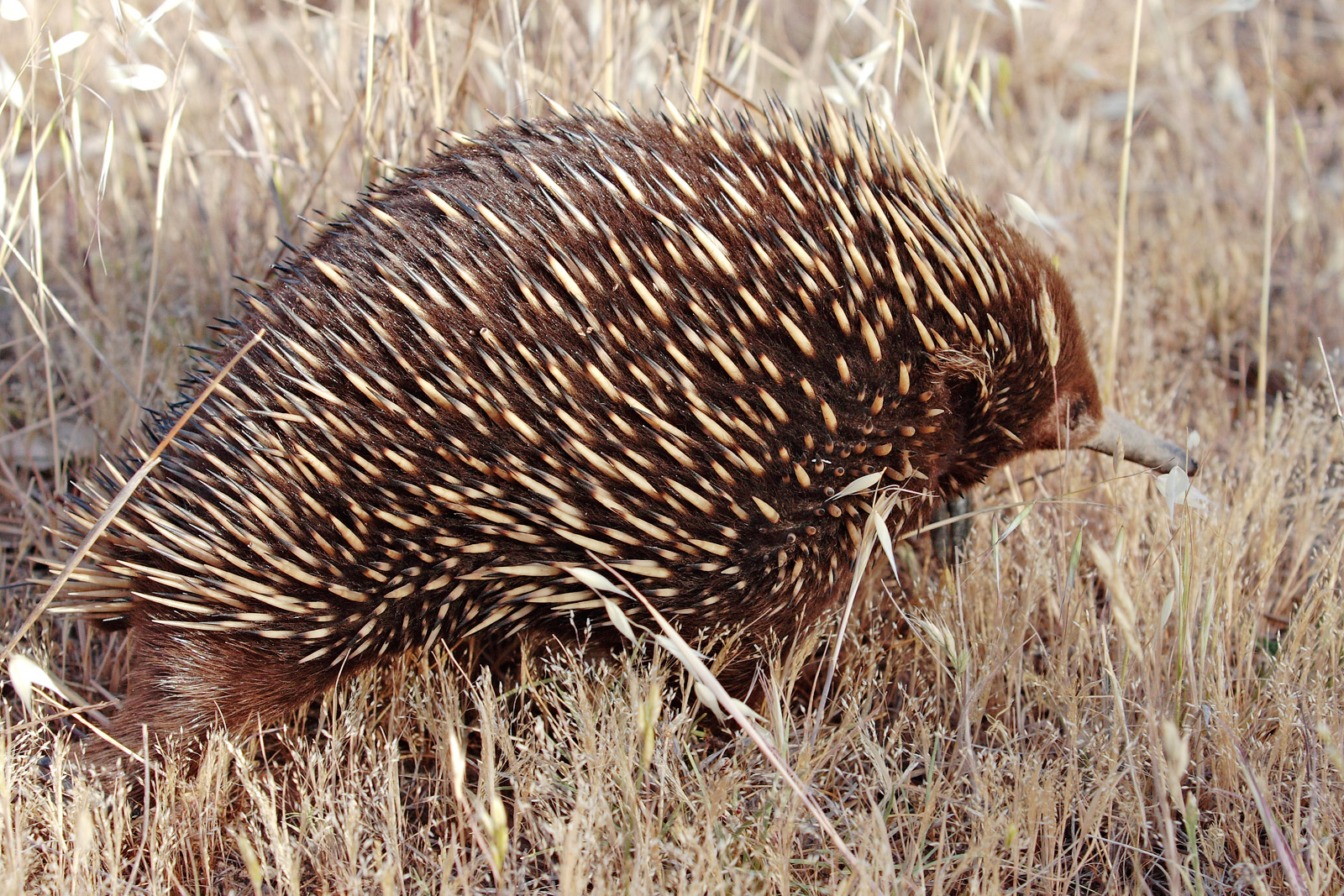Echidna
Phylum: Chordata
Class: Mammalia
Kingdom: Animalia
Order: Monotremata
Genus: Tachyglossus
-
Their spines are actually modified hairs. Echidnas' bodies (with the exception of their undersides, faces, and legs) are covered with 2-inch long spines. Fur between the spines provides insulation.
-
Echidnas live slow and long. Echidnas have the lowest body temperature of any mammal, 32__°__C (89__°__F). Their body temperatures are not controlled in the same way as that of other mammals, and can fluctuate by up 6–8°C over the course of the day. Their long life spans — up to 50 years in captivity, with anecdotal reports of wild animals reaching 45 years — are due to their low body temperature and slow metabolism.
-
Echidnas are egg-laying mammals. Along with the platypus, the echidna is a member of the monotremes, an order of egg-laying mammals found in Australia. After mating, a female echidna lays a single, soft-shelled, leathery egg, about the size of a dime, into her pouch. Ten days later, the baby echidna (called a puggle and smaller than a jelly bean) hatches.
-
Echidnas are mammals without nipples. Like all mammals, echidnas feed their young milk. But they do it without nipples. Instead, female echidnas have special glands in their pouches called milk patches that secrete milk, which the puggle laps up.
-
They are electroreceptive. Like the platypus, the echidna has an electroreceptive system. While the platypus has 40,000 electroreceptors on its bill, echidnas have only 400-2,000 electroreceptors on their snouts.
-
They're toothless but make up for it with their tongues. At the end of their slender snouts, echidnas have tiny mouths and toothless jaws. They use their long, sticky tongues to feed on ants, termites, worms, and insect larvae. (The short-beaked echidna earned its scientific name, *Tachyglossus, *meaning "fast tongue," from its way of rapidly darting its 6-inch tongue in and out of its mouth to slurp up insects). Since they have no teeth, echidnas break their food down with hard pads located on the roof of the mouth and back of the tongue. (Watch a video of an echidna hunting here.)
-
Echidnas have unusual brains. The echidna has a very large brain for its body size. Part of this might be due to their enlarged neocortex, which makes up half of the echidna's brain (compare this to about 30 percent in most other mammals and 80 percent in humans). It was long thought that echidnas didn't enter rapid eye movement (REM) sleep at all, the type of sleep associated with dreaming in humans. But recently researchers found echidnas will experience REM sleep if they're at the right temperature. They enter REM sleep at around 25 °C (77 °F), but not at higher or lower temperatures.
-
Both male and female echidnas have a pouch on the belly.





